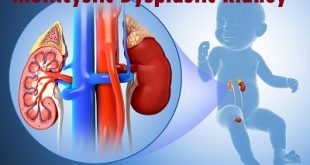Definition
Malignant mesothelioma is a rare form of cancer that affects the thin lining of the body’s internal organs, known as the mesothelium. As the word malignant implies, it is a deadly disease that often has a poor prognosis.
Malignant mesothelioma forms in the thin layer of tissue that covers the lung, chest wall, abdomen, heart, or testicles.
Epidemiology across globe
Mesothelioma develops in 1 to 2 persons per million of the general population per year, and the incidence among occupationally exposed persons is more than 40 times as high. It is responsible for approximately 5 thousand deaths in Western Europe and 3 thousand deaths in the US every year. Although asbestos processing is forbidden in many industrialized countries, the incidence of the disease is expected to rise further due to its long latency period.
The estimations say that approximately 10 thousand mesotheliomas occur annually throughout North America, Australia, Scandinavia and several other countries in Western Europe. The peak incidence of the disease in Australia is expected in 2020, and in the next 20 years about 70 thousand new cases are expected in the US. The predicted peak in Europe is for the period of 2015–2020, with an anticipated incidence of 250 thousand cases over the next 40 years.
Since about 100% of those who develop malignant mesothelioma die because of it, more than 100 thousand US citizens are expected to die in the next 40 years. Data modeling for France indicates that mesothelioma mortality among French men between 50 and 79 years of age will gradually increase, reaching a peak of 1300 deaths in 2040.
In some countries, the time trend of increasing incidence after 1986 is primarily restricted to those over 50 years, which suggests that control of the occupational exposure introduced in the 1970s have been effective. However, the awareness about the dangers of asbestos exposure effects was not similar in all the countries, which could explain the fact that the relative risk of developing a pleural mesothelioma among men is 1.83 for the generation born in 1953 compared to those born in 1928.
Types of malignant mesothelioma
There are three primary types of mesothelioma:
Malignant pleural mesothelioma – Occurs in the lining of the lungs (pleura)
Malignant peritoneal mesothelioma – Occurs in the lining of the abdomen (peritoneum)
Malignant pericardial mesothelioma – Occurs in the lining of the heart (pericardium)
Types of mesothelioma
Risk factors of malignant mesothelioma
Factors that may increase the risk of mesothelioma include:
Personal history of asbestos exposure. If you’ve been directly exposed to asbestos fibers at work or at home, your risk of mesothelioma is greatly increased.
Living with someone who works with asbestos. People who are exposed to asbestos may carry the fibers home on their skin and clothing. Exposure to these stray fibers over many years can put others in the home at risk of mesothelioma. People who work with high levels of asbestos can reduce the risk of bringing home asbestos fibers by showering and changing clothes before leaving work.
A family history of mesothelioma. If your parent, sibling or child has mesothelioma, you may have an increased risk of this disease.
Causes of malignant mesothelioma
In general, cancer begins when a series of genetic mutations occur within a cell, causing the cell to grow and multiply out of control. It isn’t clear what causes the initial genetic mutations that lead to mesothelioma, though researchers have identified factors that may increase the risk. It’s likely that cancers form because of an interaction between many factors, such as inherited conditions, your environment, your health conditions and your lifestyle choices.
Asbestos exposure is the main cause of pleural mesothelioma. When asbestos fibers are breathed in, they travel to the ends of small air passages and reach the pleura, where they can cause inflammation and scarring. This may damage cells’ DNA and cause changes that result in uncontrolled cell growth. If swallowed, these fibers can reach the abdominal lining, where they can have a role in causing peritoneal mesothelioma.
Symptoms of malignant mesothelioma
Sometimes the cancer causes fluid to collect in the chest or in the abdomen. Signs and symptoms may be caused by the fluid, malignant mesothelioma, or other conditions. Check with your doctor if you have any of the following:
- Trouble breathing
- cough
- Pain under the rib cage
- Pain or swelling in the abdomen
- Lumps in the abdomen
- constipation
- Problems with blood clots (clots form when they shouldn’t)
- Weight loss for no known reason
- Feeling very tired
Diagnosis and test
Sometimes it is hard to tell the difference between malignant mesothelioma in the chest and lung cancer.
The following tests and procedures may be used to diagnose malignant mesothelioma in the chest or peritoneum:
Physical exam and history: An exam of the body to check general signs of health, including checking for signs of disease, such as lumps or anything else that seems unusual. A history of the patient’s health habits, exposure to asbestos, and past illnesses and treatments will also be taken.
Chest x-ray: An x-ray of the organs and bones inside the chest. An x-ray is a type of energy beam that can go through the body and onto film, making a picture of areas inside the body.
CT scan (CAT scan): A procedure that makes a series of detailed pictures of the chest and abdomen, taken from different angles. The pictures are made by a computer linked to an x-ray machine. A dye may be injected into a vein or swallowed to help the organs or tissues show up more clearly. This procedure is also called computed tomography, computerized tomography, or computerized axial tomography.
Biopsy: The removal of cells or tissues from the pleura or peritoneum so they can be viewed under a microscope by a pathologist to check for signs of cancer.
The following tests may be done on the cells and tissue samples that are taken:
Cytologic exam: An exam of cells under a microscope to check for anything abnormal. For mesothelioma, fluid is taken from the chest or from the abdomen. A pathologist checks the fluid for signs of cancer.
Immunohistochemistry: A test that uses antibodies to check for certain antigens in a sample of tissue. The antibody is usually linked to a radioactive substance or a dye that causes the tissue to light up under a microscope. This type of test may be used to tell the difference between different types of cancer.
Electron microscopy: A laboratory test in which cells in a sample of tissue are viewed under a high-powered microscope to look for certain changes in the cells. An electron microscope shows tiny details better than other types of microscopes.
Treatment and medications
Surgery
Surgeons work to remove mesothelioma when it’s diagnosed at an early stage. In some cases this may cure the cancer.
Sometimes it isn’t possible to remove all of the cancer. In those cases, surgery may help to reduce the signs and symptoms caused by mesothelioma spreading in your body.
Surgical options may include:
Surgery to decrease fluid buildup. Pleural mesothelioma may cause fluid to build up in your chest, causing difficulty breathing. Surgeons insert a tube or catheter into your chest to drain the fluid. Doctors may also inject medicine into your chest to prevent fluid from returning (pleurodesis).
Surgery to remove the tissue around the lungs or abdomen. Surgeons may remove the tissue lining the ribs and the lungs (pleurectomy) or the tissue lining the abdominal cavity (peritonectomy). This procedure won’t cure mesothelioma, but may relieve signs and symptoms.
Surgery to remove as much of the cancer as possible (debulking). If all of the cancer can’t be removed, surgeons may attempt to remove as much as possible. Debulking allows doctors to more accurately direct radiation treatments to relieve pain and fluid buildup caused by mesothelioma.
Surgery to remove a lung and the surrounding tissue. Removing the affected lung and the tissue that surrounds it may relieve signs and symptoms of pleural mesothelioma. If you’ll be receiving radiation therapy to the chest after surgery, this procedure also allows doctors to use higher doses, since they won’t need to worry about protecting your lung from damaging radiation.
Chemotherapy
Chemotherapy uses chemicals to kill cancer cells. Systemic chemotherapy travels throughout the body and may shrink or slow the growth of a mesothelioma that can’t be removed using surgery. Chemotherapy may also be used before surgery (neoadjuvant chemotherapy) to make an operation easier or after surgery (adjuvant chemotherapy) to reduce the chance that cancer will return.
Chemotherapy drugs may also be heated and administered directly into the abdominal cavity (intraperitoneal chemotherapy), in the case of peritoneal mesothelioma. Using this strategy, chemotherapy drugs can reach the mesothelioma directly without injuring healthy cells in other parts of the body. This allows doctors to administer higher doses of chemotherapy drugs.
Radiation therapy
Radiation therapy focuses high-energy beams from sources such as X-rays and protons to a specific spot or spots on your body. Radiation may be used after surgery to kill any remaining cancer cells. It may also help reduce signs and symptoms of advanced cancer in situations where surgery isn’t an option.
Clinical trials
Clinical trials are studies of new mesothelioma treatment methods. People with mesothelioma may opt for a clinical trial for a chance to try new types of treatment. However, a cure isn’t guaranteed. Carefully consider your treatment options and talk to your doctor about what clinical trials are open to you. Your participation in a clinical trial may help doctors better understand how to treat mesothelioma in the future.
Clinical trials are currently investigating a number of new approaches to mesothelioma treatment, including:
- Targeted therapy, which involves using drugs that attack specific abnormalities within cancer cells.
- Biological therapy, which uses your body’s immune system to fight cancer.
- Gene therapy, which involves altering the genes inside the cancer cells in order to stop disease.
Treatment for other types of mesothelioma
Pericardial mesothelioma and mesothelioma of tunica vaginalis are very rare. Early-stage cancer may be removed through surgery. Doctors have yet to determine the best way to treat later-stage cancers, though. Your doctor may recommend other treatments to improve your quality of life.
Prevention of malignant mesothelioma
Reducing your exposure to asbestos may lower your risk of mesothelioma.
Find out whether you work with asbestos
Most people with mesothelioma were exposed to the asbestos fibers at work. Workers who may encounter asbestos fibers include:
- Miners
- Factory workers
- Insulation manufacturers
- Ship builders
- Construction workers
- Auto mechanics
Ask your employer whether you have a risk of asbestos exposure on the job.
Be safe around asbestos in your home
Older homes and buildings may contain asbestos. In many cases, it’s more dangerous to remove the asbestos than it is to leave it intact. Breaking up asbestos may cause fibers to become airborne, where they can be inhaled. Consult experts trained to detect asbestos in your home. These experts may test the air in your home to determine whether the asbestos is a risk to your health. Don’t attempt to remove asbestos from your home — hire a qualified expert. The Environmental Protection Agency offers advice on its website for dealing with asbestos in the home.
 Diseases Treatments Dictionary This is complete solution to read all diseases treatments Which covers Prevention, Causes, Symptoms, Medical Terms, Drugs, Prescription, Natural Remedies with cures and Treatments. Most of the common diseases were listed in names, split with categories.
Diseases Treatments Dictionary This is complete solution to read all diseases treatments Which covers Prevention, Causes, Symptoms, Medical Terms, Drugs, Prescription, Natural Remedies with cures and Treatments. Most of the common diseases were listed in names, split with categories.








is this the caused of tuberclausis
No, its the cause of genetic mutations.
it is very nice